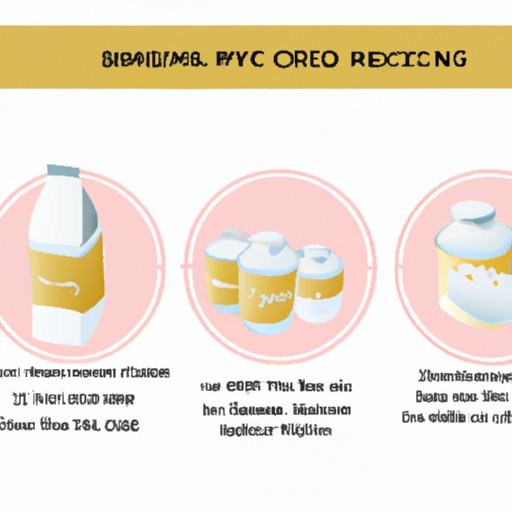
Introduction
For new mothers, breast milk is the best source of nutrition for their babies, but sometimes they need to store them for later use. Freezing breast milk is an excellent way of preserving it and ensuring that the baby always has access to this nutritious food. But how long can you freeze breast milk? This article will explore everything you need to know about how long breast milk can stay in the freezer.
Exploring the Science Behind Breast Milk Freezing: A Guide to Understanding How Long It Can Last in the Freezer
Breast milk is unique and contains a range of components, such as fats, proteins, and vitamins. The composition of breast milk also changes over time, adapting to the baby’s needs. This composition affects how the milk should be stored and how long it can last in the freezer.
The temperature at which the breast milk is stored plays a crucial role in determining its shelf life. The colder the temperature, the longer it can last. Storage containers also matter, as they can affect the quality of the milk over time.
Storage Guidelines for Breast Milk: A Complete Overview of How Long it Can Stay in the Freezer
The duration for which breast milk can stay in the freezer depends on the type of freezer. Breast milk can last up to 6 months in a standard freezer with a separate door, but up to 12 months in a deep freezer.
A deep freezer maintains a temperature of 0°F or lower, which helps keep breast milk safe for longer. One trick is to store milk in the back of the freezer, where the temperature is more constant and less likely to fluctuate with the opening and closing of the door.
Navigating the Frozen Breast Milk Game: Tips and Tricks to Get the Most Out of Your Stash
One of the best ways to organize your frozen breast milk is by labeling the storage bag or container with the date of expression. This makes it easier to use the milk in a first-in-first-out (FIFO) manner so that older milk gets used first.
It’s also important to maximize the storage space in the freezer. You should consider using a vertical storage system, which takes up less space than a horizontal system.
Common Myths and Misconceptions About Freezing Breast Milk, Debunked
Many myths surround freezing breast milk and its effect on the quality and nutritional value of the milk. For instance, some people believe that frozen breast milk is unsafe for consumption as it loses its properties over time. However, research suggests that freezing breast milk under proper conditions doesn’t affect its quality and nutritional content.
Another common myth is that breast milk shouldn’t be refrozen once it has been thawed. However, it is completely safe to refreeze the milk if the baby doesn’t finish it, but you should do it within 24 hours of thawing.
From Freezer to Fridge: A Step-by-step Guide to Safely Thawing Your Frozen Breast Milk
Thawing frozen breast milk is a crucial step in feeding your baby, and it’s essential to do it safely. The recommended method is to thaw the milk in the refrigerator, which takes about 12 hours. For a quicker thaw, you can place the bag or container in a bowl of warm water, but it’s essential to monitor the temperature closely to avoid overheating.
It’s crucial to avoid thawing breast milk in the microwave. Doing this can create hotspots in the milk, making it unsafe for the baby and damaging some of the milk’s nutrients.
Maximizing the Shelf Life of Frozen Breast Milk: Best Practices for Proper Collection, Storage, and Handling
It’s important to follow the correct procedures for collecting, storing, and handling breast milk to maximize its shelf life. This includes thoroughly washing hands and using a clean pump before expressing milk, storing the milk in clean bottles or bags, and using BPA-free containers.
When warming milk, you should place it in a bowl of warm water or use a bottle warmer. You should avoid using a microwave to warm breast milk as it can create hotspots and damage key nutrients in the milk.
Conclusion
In conclusion, storing breast milk is a convenient way of ensuring that babies have access to nutritious food. Proper storage, handling, and thawing of breast milk are essential for its quality and safety. Understanding how long you can freeze breast milk is crucial for effective planning. The guidelines in this article will help new mothers safely store their milk and maximize its shelf life.
By following the tips and tricks provided in this guide, new mothers can navigate the frozen breast milk game with ease. Share this knowledge with other new mothers, and apply it to safely store and serve breast milk to your baby.




